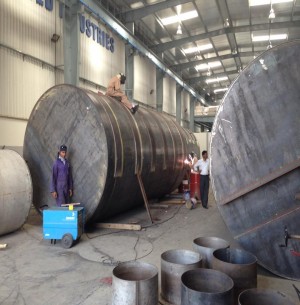
Important Points to Consider Before You Buy A Fuel Tank

10 May, 2022
Whenever a manufacturing or fuel production/transportation company is in the business of dealing with oil, petroleum, diesel fuel, gasoline, kerosene or other fuel products, In UAE they'll maximum likely need fuel tank systems supplied by the Fuel Tank Suppliers in UAE. These systems, whether underground, on-ground or above-ground, are aimed to shield the fuel resources from theft or destruction or contamination, but also to defend the environment from accidental or intentional exposure to the fuel sources.
Therefore it is important to double-check before you buy a fuel tank below are some of the significant points to consider before taking a final decision.
Will your tank meet federal and local regulations?
Some regulations cover tanks that are transported full (or even with residue) and other regulations that manage fixed installations need to be followed by the fuel tanks manufacturer UAE. For road transportation, you will need to obey Federal Regulations as set out in different countries.
Stationary installations are regularly administered by local fire marshals’ offices. The fire departments sometimes have their code based on the exact or unique necessities of their geographic territory. They also frequently have various rules based on what fuel is being stored and whether they deem the tank to be a permanent tank or a stationary tank. Usually, fire departments follow the National Fire Protection Association Regulation different acts.
In addition, the Environmental Protection Agency has some plans like Spill Prevention, Control, and Countermeasure. This relates to some facilities built on the location, activity and quantity of fuel stored.
How much fuel are you planning to hold?
You want to be definite to use a fuel tanks UAE that can meet your volume needs. Each fuel tank refuel makes additional spill risks, probabilities for operator error, delivery costs and truck traffic. In maximum cases, we endorse that you use a tank that can hold approximately 1 month’s supply of fuel.
In general, superior fuel tanks deliver a more cost-effective solution for storing fuel, but you want to evade having fuel stand for too long. Also, when looking at different capabilities, be sure to calculate the safe fill of any tank you consider (95% of the tank’s brim-full capacity).
Will you need to transport your tanks?
If you are not installing the fuel tank, but pretty using it as temporary fuel storage for job sites, proceedings, seasonal programs, etc., it may be helpful for you to use a transportable fuel tank. Transportable fuel tanks must be designed and verified to withstand the dynamic measure of fuel during transportation. They must also be appropriate and comply with the rules laid out in 49CFR.
If you plan on using a trailer to tow the tank nearby your job site, it is essential to consider what approvals your trailer will require to meet as well. Trailers can be permitted for towing onsite only or on-highway use.
How much fuel do you use?
Though a simple question, it’s the main consideration. Petrol is delivered in the UK by tanker and is important fed. This means when you order your fuel it’s measured out at the fuel yard and placed in a ‘pot’ in the tanker precisely reserved for your delivery. That defines the amount you order must be delivered by your petrol tank. Some fuel delivery companies also need a minimum amount of petrol to be ordered for it to be reasonable for them to deliver. Take this into consideration when ordering your tank.
Where will the tank go?
As stated petrol is gravity delivered. This means the tank should be located on a flat, smooth surface that is on the same level as the delivery tanker. If the tank is situated too high the gravity-fed system will not work and a delivery transfer pump would be essential which a far more expensive option is. Siting the tank at ground level removes this cost. The tanker also delivers from the left-hand side and must have a clear straight exit should it need to leave in a crisis. These are two issues to consider but we are at hand to help with the rest!
Get Shipping Confirmation
Finally, you should get your tank when the supplier said you will obtain it. Though your supplier can’t control what occurs when it leaves his dock, you should ask them to send you validation of shipping and a tracking number. This will give you an autonomous report of the day it was picked up and where it is along the way so you can track the delivery development.
